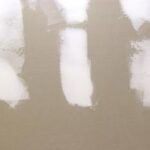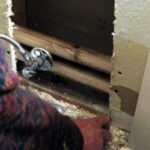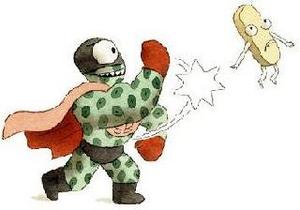Using metal wall stud screws for the first time can be a very trying experience; those unfamiliar with the properties of these screws can tend to feel like something is lacking in the design process. The reason for the difficulty stems from the properties of the two materials involved, one, the metal wall stud, and two, the metal wall-stud screw (or drywall screw).
Manufactured drywall screws result in an extremely hard material. This material makes them a wonderful universal screw for many applications but due to their incredibly hard properties, they are a very brittle screw. This makes their shear value somewhat ambiguous (i.e. they break easily when transverse loads are applied).
Metal wall-studs are also manufactured from a very hard material (although not as hard as the screw), but have a far greater modulus of elasticity, that is, the metal is much more flexible than the screw. This is a great benefit, as without this additional degree of flexibility, the ability to penetrate the material with the metal stud screw would be more difficult.
There are two types of metal-stud screws, one with a very sharp point, and another with a fluted tip resembling the tip of a drill. For the beginner, purchasing the fluted tip type screw will facilitate installation. If one is simply making a small repair or needs only a few screws, a typical battery operated drill/screw driver will suffice. However, if the project is big, necessity will warrant the purchase of a corded electrically powered screw gun.
Watching professional drywall installers install entire sheets of wallboard in seconds can boggle the mind further confounding the first time installer with the apparent ease in which these professionals accomplish the task. The professional has two things going for him that are not readily evident. First, the screw is set into the stud with a significant amount of force piercing the metal stud with a very slight dent in which the screw can get a bight into the metal. The second items involves setting the depth finder on the screw gun which (when correctly adjusted) disengages the clutch of the screw gun when the head of the screw just reaches flush with the wallboard.
The building code requirement for drywall screw inspection requires the screw to be flush with the face of the drywall without breaking the paper surface of the wallboard. This is not the option for an amateur who also intends to fire-tape and mud screw heads for paint preparation.
The ideal scenario for an amateur who wants to enjoy success at drywall installation involves the use of nails (which cannot be used in combination with metal studs). This is due to the ability of the installer to dimple the sheetrock with the hammer face thereby creating a depression in which to place the drywall mud.
The typical problem an amateur encounters when trying to set drywall screws into metal studs is that the screw just spins in place without ever going into the stud. Conversely, the screw will bend sideways ripping the surface of the drywall making the hole useless. When the screw spins in place, this also can create such a large hole, the head of the screw will no longer hold the sheet in place (particularly concerning if the sheet of drywall is on the ceiling).
Recognizing that no action in piecework is done without a purpose, there are two reasons why the professional uses such force when setting the drywall screw into the metal stud. One, to get the screw to bite into the metal stud and to insure the sheetrock is flush against the wall studs when secured.
Nothing can be more frustrating than having a sheet of drywall partially complete only to discover it is not firmly placed against the studs. This will result in some of the screws penetrating the paper and ruining the installation as well as heads popping through the finish if someone places force against the board.
Recognizing the problems above, there is no need to fear this type of project. By setting up a small practice area and trying the set process, forcibly pushing the screw into the wall stud while in the screw gun will reveal the necessary motions in a matter of minutes. This will also allow the user to adjust the clutch so that the screw head is properly embedded.
One final note worthy of attention is this proper embedment requirement. There is nothing more disappointing than having several thousand screws installed that must receive a quarter turn or less with a hand driver to set them prior to mudding the surface. This is easily avoided by keeping a taping knife in your back pocket checking embedment occasionally as you go. By simply placing the knife across the head of the screws, the edge of the knife should touch the sheetrock on both sides of the screw while just barely bridging the head. This will insure that when taping time arrives, one can easily apply mud over the screw without having the head show. Do not be concerned if a few heads require adjustment. If more heads than not are requiring adjustment, the clutch on the screw gun is in need of attention. This should enable any mechanically inclined beginner to navigate the installation of metal stud screws into metal wall studs.





